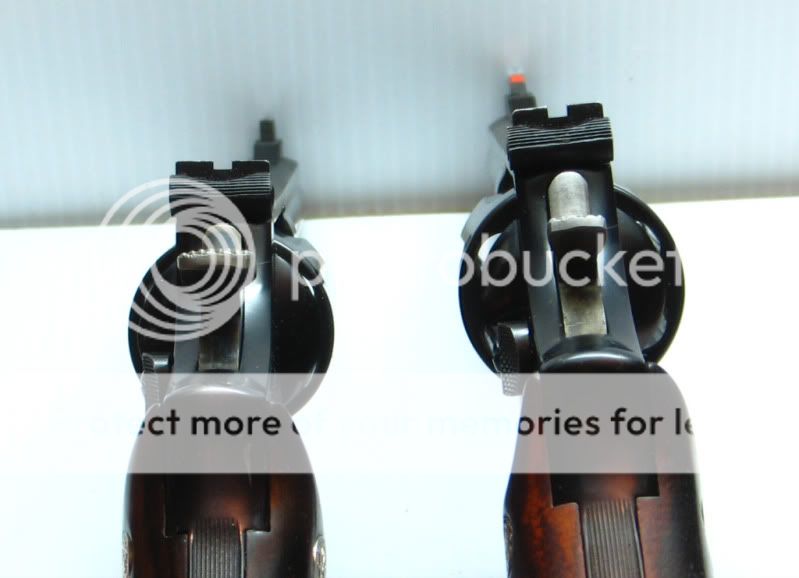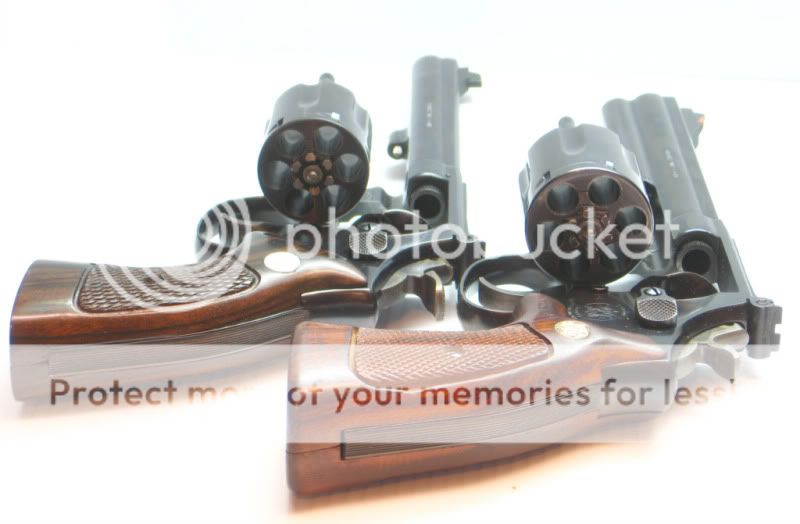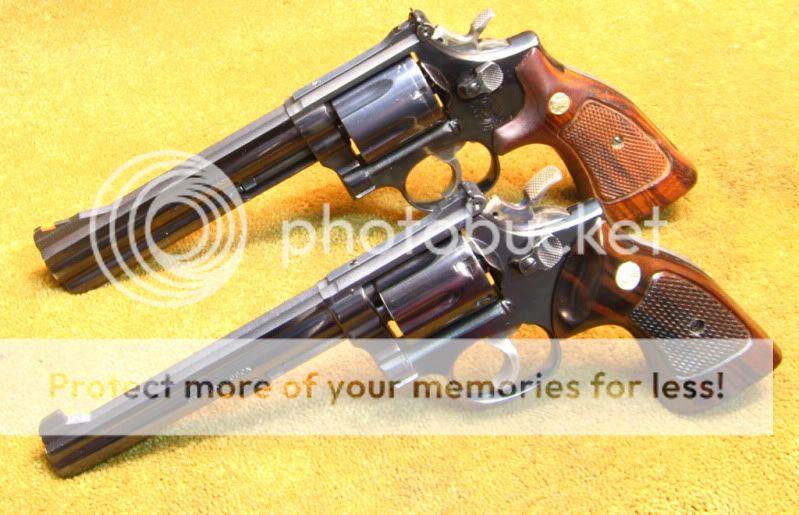Confederate
Member
When the going got tough, the tough got going, and when S&W's K-frame series of guns wasn't able to take a steady diet of hot magnum ammo, S&W decided to beef up some of the parts prone to failure with high pressured rounds. After that, Ruger decided to add a full lug to the barrels of its new series of gun as well as a few more ounces. If S&W was beefing up its guns, Ruger was going to do the same regardless of whether they needed it or not.
Now that the vaunted "L" frames have been on the market for years, and S&W has increased the number of rounds from six rounds to seven, I haven't heard any complaints. One area of their guns that S&W changed was the forcing cone. The Ruger "Six" revolvers, however, were known to shoot many thousands of rounds of hot magnums without any problems. Skeeter Skelton said he knew of three Security-Sixes, each of which had 30,000+ hot magnum rounds, and only one was spitting a little but was still shootable. I've also noticed many new lightweight magnums have very skinny forcing cones, and they seem to be having no problems with cracked forcing cones.

The S&W 686 has a beefy forcing cone, replacing the ones in the
Model 19/66s which were subject to cracking.
The 686s also are balanced to lean forward in the hand towards the barrel. The Ruger GP-series revolver also adds a full lug barrel. Ruger's "Six" series points very well and their "skinny" barrels pick up targets much easier in my view. By taking steel out of the grip and shifting it to the barrel, the idea was to tame magnum blasts. All this was dictated by S&W, which was trying to emulate the Colt Python revolvers. The whole idea behind the K-frame revolvers was providing police with medium sized guns. I reckon when S&W and Ruger came to the conclusion that the police were moving away from revolvers to autos, that they turned their magnums into range guns.


I've dry fired both guns over the past day or so and the balance on the Ruger is, for me, preferable to the 686. If I were at a range, I'd prefer the 686 because the barrel stays on the target easier. But if I were out hiking, or if I were lost in the wilderness, I'd prefer the Ruger. For self defense and other quick shots, the Ruger wins every time.
What do you think?

Even though the L-frame is said to be "beefier" than the K-frame,
I put my 686 over an "actual size" 66 photo. Although the cylinder is
indeed beefier, I checked the size of the frame to the photo and can't
see any difference.
.
.
.
.
.
Now that the vaunted "L" frames have been on the market for years, and S&W has increased the number of rounds from six rounds to seven, I haven't heard any complaints. One area of their guns that S&W changed was the forcing cone. The Ruger "Six" revolvers, however, were known to shoot many thousands of rounds of hot magnums without any problems. Skeeter Skelton said he knew of three Security-Sixes, each of which had 30,000+ hot magnum rounds, and only one was spitting a little but was still shootable. I've also noticed many new lightweight magnums have very skinny forcing cones, and they seem to be having no problems with cracked forcing cones.

The S&W 686 has a beefy forcing cone, replacing the ones in the
Model 19/66s which were subject to cracking.
The 686s also are balanced to lean forward in the hand towards the barrel. The Ruger GP-series revolver also adds a full lug barrel. Ruger's "Six" series points very well and their "skinny" barrels pick up targets much easier in my view. By taking steel out of the grip and shifting it to the barrel, the idea was to tame magnum blasts. All this was dictated by S&W, which was trying to emulate the Colt Python revolvers. The whole idea behind the K-frame revolvers was providing police with medium sized guns. I reckon when S&W and Ruger came to the conclusion that the police were moving away from revolvers to autos, that they turned their magnums into range guns.


I've dry fired both guns over the past day or so and the balance on the Ruger is, for me, preferable to the 686. If I were at a range, I'd prefer the 686 because the barrel stays on the target easier. But if I were out hiking, or if I were lost in the wilderness, I'd prefer the Ruger. For self defense and other quick shots, the Ruger wins every time.
What do you think?

Even though the L-frame is said to be "beefier" than the K-frame,
I put my 686 over an "actual size" 66 photo. Although the cylinder is
indeed beefier, I checked the size of the frame to the photo and can't
see any difference.
.
.
.
.
.










